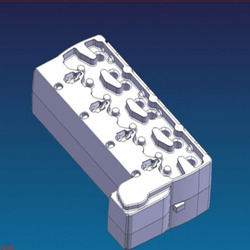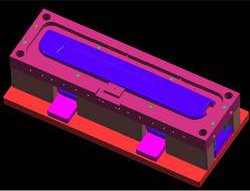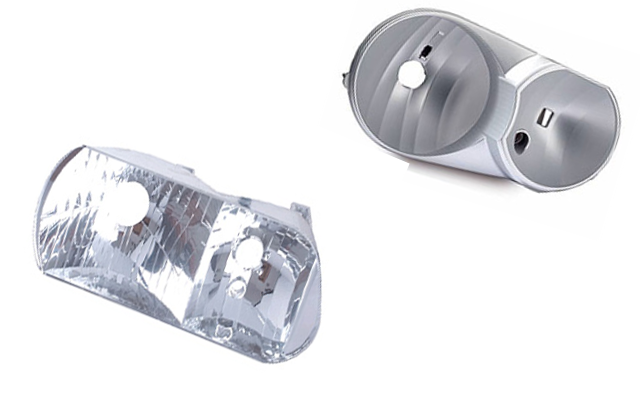
Reverse Engineering of Plastic Parts
Reverse Engineering helps in generating data from any physical component whose dimensional data is unavailable. This engineering saves a lot of time and resources.
Our Reverse Engineering involves producing 3D images of manufactured parts when a blueprint is not available in order to re manufacture the part. To reverse engineer a part, the part is measured by a Coordinate Measuring Machine (CMM). As it is measured, a 3-D wire frame image is generated and displayed on a monitor. After the measuring is complete, the wire frame image is dimensioned. Any part can be reverse engineered using these methods.
Our engineers are proficient in creating 3D models, manufacturing drawings and generating manufacturing data from any given physical products/components, assemblies and detailed drawings, using the latest CMM/Laser scanners.
Plastics Injection Moulds Design
The practicality of virtual model is proved by it's tooling concepts. After finalizing the product model with approval of our tool design engineers, we plan the appropriate program to manufacture the automatic and economical moulds/dies. We employ VISI-Mould/VISI-Pro that helps us achieve high quality standards of mass production. While designing a die or a Mould special attention is given to the machining concepts and assembly of the inserts.


Bulk Moulding Compound Moulds Design
BMC is a thermoset plastic resin blend of various inert fillers, fiber reinforcement, catalysts, stabilizers, and pigments that form a viscous, puttylike compound. BMC is highly filled and reinforced with short fibers. Glass reinforcement represents between 10% and 30%, with glass length typically between 1/32-inch and 1/2-inch (12.5mm).
Depending on the end-use application, compounds are formulated to achieve close dimensional control, flame and track resistance, high dielectric strength, corrosion and stain resistance, UV resistance, superior mechanical properties, low shrink and color stability. Its excellent flow characteristics and electrical and flame resistant properties make BMC well suited to a wide variety of applications requiring precision in detail and dimensions.
In addition to performance, BMC is also aesthetically appealing. The material can be molded in a wide variety of colors. Alternately, BMC can tolerate powdercoat or water-based paint.
BMC is available in various grades and flow ranges for compression, injection, transfer and runnerless injection compression molding. Find out why BMC is fast becoming the material of choice for design engineers looking to reduce cost in new high-performance applications. BMC has many beneficial properties including dimensional stability, corrosion and UV resistance, low shrink and color stability.

